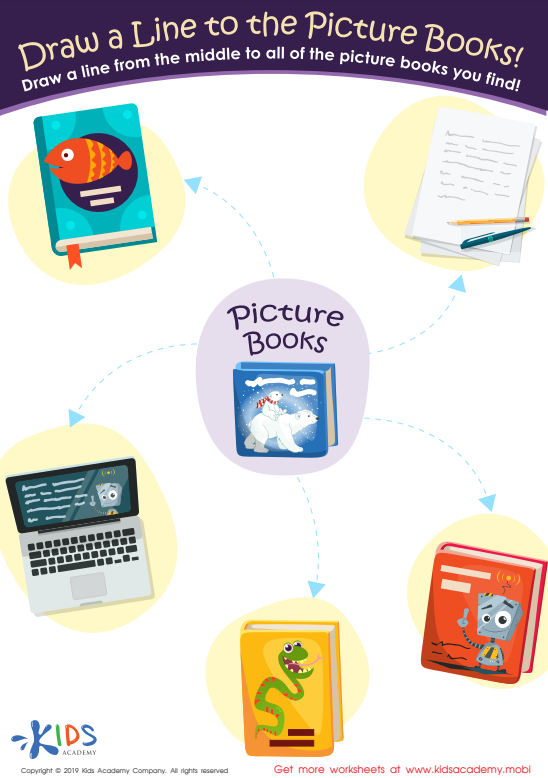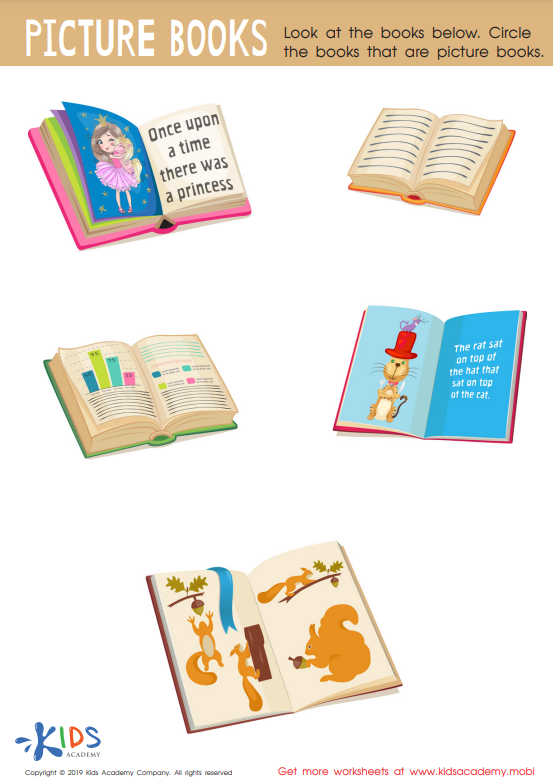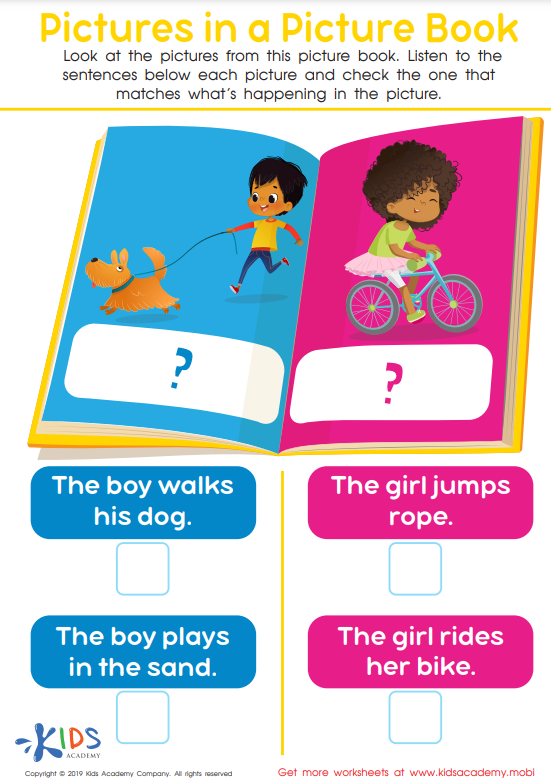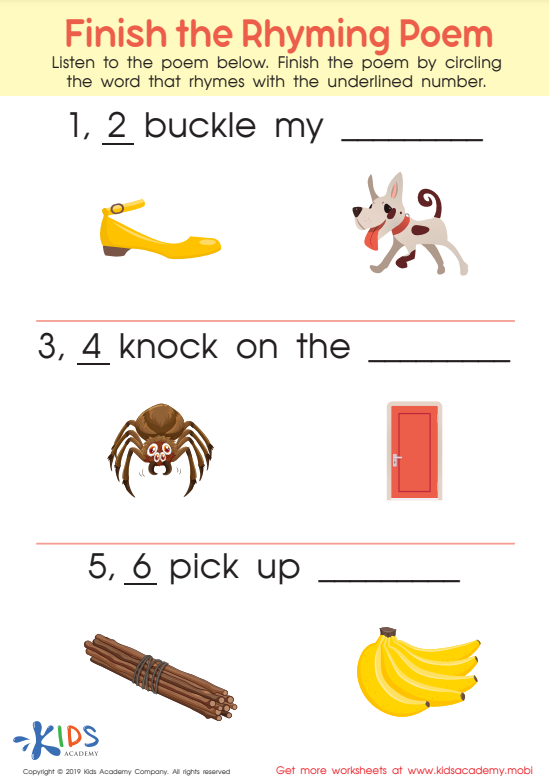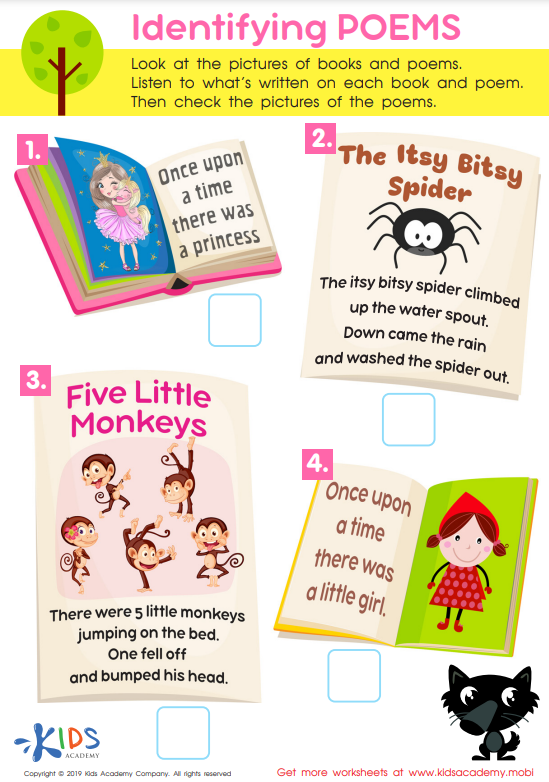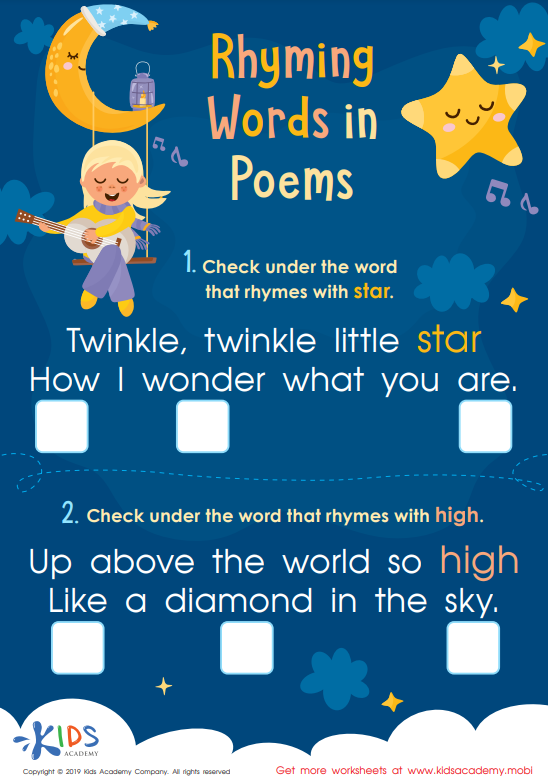-
English
-
English Pre-K
-
Unit 1: Early Literacy Skills
-
ABCs
- Pre-writing Activities
- Letter A
- Letter B
- Letter C
- Letter D
- Letter E
- Letter F
- Letter G
- Letter H
- Letter I
- Letter J
- Letter K
- Letter L
- Letter M
- Letter N
- Letter O
- Letter P
- Letter Q
- Letter R
- Letter S
- Letter T
- Letter U
- Letter V
- Letter W
- Letter X
- Letter Y
- Letter Z
-
Phonological Awareness
- Rhyming Words
- Letter Sounds B, C, D, and F
- Letter Sounds G, H, J, and K
- Letter Sounds L, M, N, and P
- Letter Sounds Q, R, S, and T
- Letter Sounds V, W, X, Y, and Z
- Letter Sounds A, E, and I
- Letter Sounds O and U
- Beginning Sounds
- Matching Letters to Sounds
-
ABCs
-
Unit 2: Vocabulary
-
Common Words
- Sorting Words into Categories
- Color Words
- Verbs and Adjectives
-
Sight Words
- Sight Words 'I' and 'Can'
- Sight Words 'You' and 'Like'
-
Common Words
-
Unit 3: Print Awareness
-
Parts of a Book
- Working with a Book
- Spaces Between Words
- Text and Illustrations
-
Picture Books and Poems
- Picture Book Text Features
- Poem Text Features
- Signs and Labels in the Community
-
Parts of a Book
-
Unit 4: Reading Literature
- Questions About Stories
- Discussing Stories
-
Unit 5: Reading Informational Texts
- Retelling Details in a Text
- Questions About a Text
- Connections Between Events
- Text Features
- Describing Illustrations
-
Unit 1: Early Literacy Skills
-
English Pre-K
-
Math
-
Math for Pre-Kindergarten
-
Logic and Geometry
-
Matching and Sorting
- Same and Different
- Which One Is a Little Different?
- Objects That Go Together
- Sorting by Color and Size
- Sorting The Same Group in Different Ways
- Patterns
-
Shapes
- Shapes in Our Environment
- Naming Shapes Regardless of Size
- Making Shapes in Preschool
- Comparing Shapes
- Relative Positions
- Sorting Shapes
-
Matching and Sorting
-
Early Number Sense
-
Numbers 1–5
- Counting to 3
- Counting to 5
- Arranging Objects up to 3 Objects
- Arranging up to 5 Objects
- Writing Numbers 1–5
-
Numbers 1–5
-
Numbers up to 10
- Counting to 10
- Arranging up to 10 Objects
- Number 0
- Writing Numbers 6–10
- Breaking Down Numbers 6-10
-
Logic and Geometry
-
Math for Pre-Kindergarten
Picture Books and Poems
Drop Everything and Read! Establish a time in your family’s routine to focus on reading. Start with ten minutes of sustained reading time and increase as your child grows older. It’s time to be the book whisperer to help your child fall in love with reading. What better way is there to do this than to pull out the picture books?
Get creative with reading time by changing the setting. Read in the backyard with glasses of lemonade. Enjoy books on a boat or train ride. Take your toddler to a coffee shop for quality time with a book. Aim for dynamic storylines that appeal to your child’s interests.
Genres of Picture Books
Children’s books come in a wide variety of genres to capture your child’s interests.
Fiction Stories
Read Me a Fairy Tale
Fairytales and folktales are both commonly used in picture books. Some children enjoy the common structure of these texts, such as the “long-ago” setting and the magical elements.
Can We Read About Real People’s Lives?
Realistic fiction stories are a great fit for young readers. Many parents find success using these books to teach about social issues. For example, your child may benefit from reading a book to prepare him to become a big brother or to start preschool.
Let’s Get Lost in a Fantasy World
Your child’s imagination is at its peak in this phase. Talking animals and magical lands with fanciful creatures are sure to keep your youngster’s nose in a book. Discuss the fantasy events in contrast to real events.
I Can Write a Story Too!
Try wordless picture books to promote using illustrations to make meaning. Your child can write her own story based on what she sees in the pictures.
These activities on Kids Academy’s website can help your toddler identify picture books and connect text to illustrations.
Non-Fiction Texts
Animal and nature lovers step forward. Is your child intrigued by historical events and people? Stroll over to the nonfiction section of the library to find picture books, magazines, and biographies. Your child may appreciate a subscription to a periodical designed for children. Some good options include Scholastic News, Time for Kids, Highlights, and National Geographic Kids.
Poetry
Don’t underestimate the impact that reading poetry has on early literacy skills. For one, reading rhythmic poetry promotes fluency. Additionally, some poems feature rhyming words. Identifying rhymes works hand in hand with phonemic awareness instruction.
Try these worksheets from Kids Academy to measure your child’s understanding of the text.
Key Takeaways
Books should not be a stranger to your child on the first day of Pre-K. You want your youngsters to be familiar with print and comfortable with books. Provide a diverse supply of picture books in different genres. Match book selections to your child’s interests. These actions contribute to your child’s overall print awareness.
